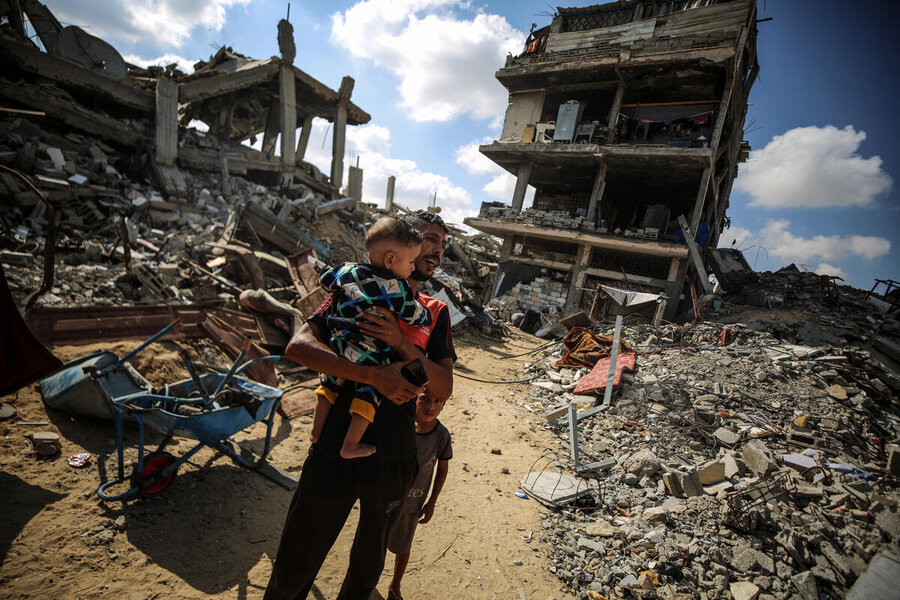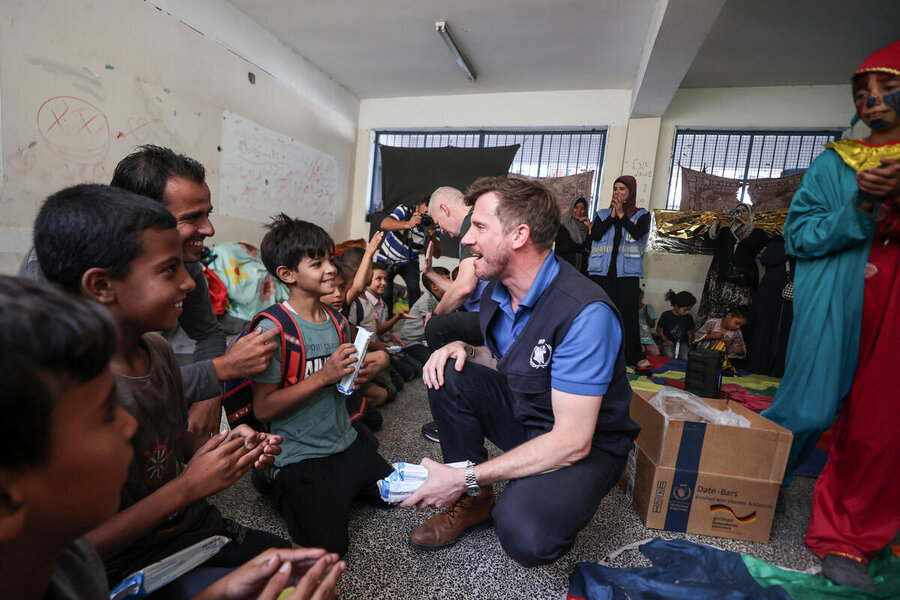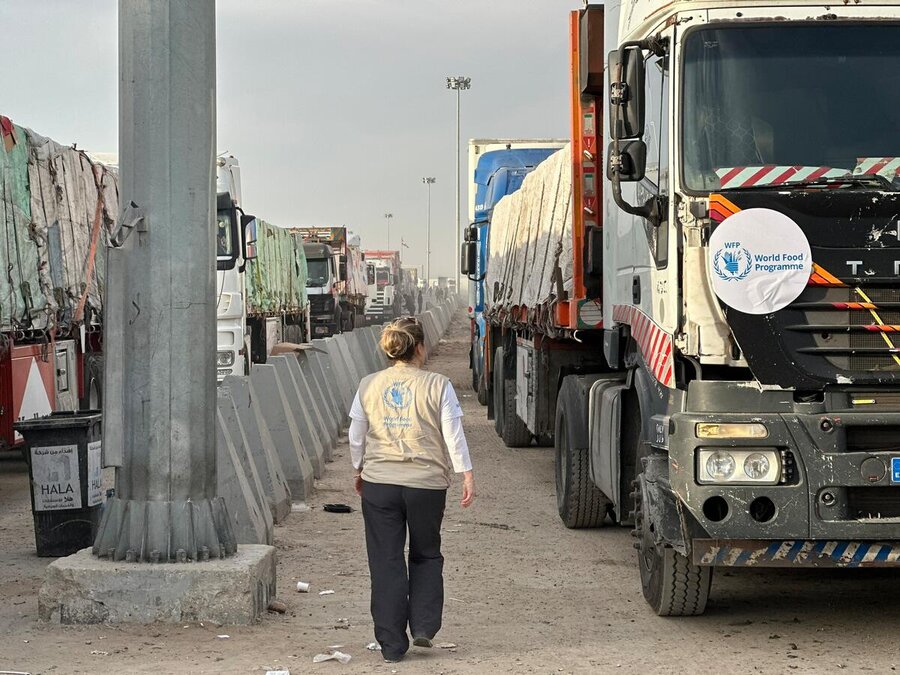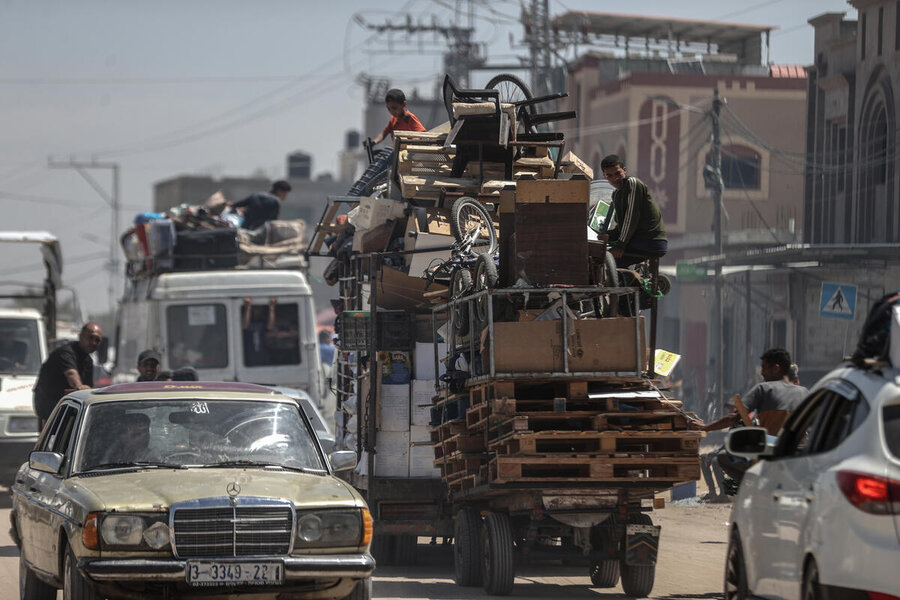Expert report: Risk of famine persists in conflict-hit Gaza

Hundreds of thousands of people in Gaza risk famine this winter unless fighting stops and more humanitarian aid reaches desperate families, according to a new hunger assessment published today by experts from 16 UN agencies and nongovernmental organizations.
Known as the Integrated Food Security Phase Classification, or IPC, the snapshot projects that 1.95 million people in Gaza, or more than 9 in 10 of the enclave’s population, will face acute food insecurity or worse in the coming months. Even more worrying, 345,000 are projected to face catastrophic hunger, or IPC 5 – the highest hunger level in the IPC classification.
Another 875,000 people, or more than 4 in 10 people, will face emergency food insecurity, just one step below. Overall, the snapshot underscores the devastating fallout of more than a year of fighting that has decimated livelihoods, drastically reduced food production and severely restricted both commercial and humanitarian supply lines in the enclave.

“With local food systems destroyed and farms damaged, people are completely dependent on supplies coming through the border,” says Antoine Renard, World Food Programme (WFP) Palestine Country Director, adding that this flow of aid must be steady and reliable for real progress to be made. “Nearly 2 million people in Gaza still face the risk of famine – and that risk will persist unless all border crossings remain open and aid continues to reach those in need.”
The IPC snapshot found the severity of hunger in Gaza was marginally reduced in recent weeks, compared to the last IPC report in June. The earlier improvement was largely attributed to an uptick in humanitarian assistance in several areas of the strip – North Gaza, Gaza City, Deir al-Balah and Khan Younis governorates – between this past May and August.
But this slight improvement will likely be short-lived, the report warns: ongoing fighting and the sharp reduction of humanitarian and commercial flows since September are expected to push most of Gaza’s population back into severe food insecurity and worsening levels of acute malnutrition this winter.

“No humanitarian food supplies entered northern Gaza in the first two weeks of October, and only a few trucks reached the south and central areas, meaning the situation is likely far worse than what the assessment picked up when data was collected in September,” says Arif Husain, WFP’s Chief Economist.
“Commercial supplies are down, there is large-scale displacement, infrastructure is decimated, agriculture has collapsed and people have no money,” Husain adds. “All this is reflected in the IPC’s projection that the situation will get worse from November onwards.”
In the central Gaza town of Der Al Balah, Siham Zayid soothes her crying daughter Jana, who like many of Gaza’s children, is severely malnourished. “When I look at her, I think I might lose her because there is no medical care here these days,” Zayid says, adding, “We gone through it all. I hope God will heal her.”

Over the past year, WFP has reached young children like Jana and other vulnerable people with special foods to treat malnutrition – along with hot meals and other food assistance for the broader population. But because of a shortage of food supplies in September, we could only reach half the families targeted for food assistance – and with reduced rations.
This month, WFP has been unable to conduct any food parcel distributions. Supplies for our hot meal kitchens and bread production are running dangerously low.
“The small progress we have seen is a signal that the flow of humanitarian and commercial cargo into Gaza was working,” WFP’s Husain says. “But we are now in a very difficult situation. Without safe and sustained access, WFP cannot deliver life-saving humanitarian assistance at the required scale.”

Indeed, the northern and central Gaza governorates, along with Rafah in the south, face a risk of famine between November and April, the report finds, if fighting continues and humanitarian and commercial supply lines remain severely restricted. The ongoing conflict in northern Gaza and Deir al-Balah, in the centre, suggests this worst-case scenario is plausible, it says.
WFP has consistently called for crossing points to be open, bureaucratic impediments to be removed, and law and order to be restored around the crucial Kerem Shalom crossing point in Gaza’s south. We have also called for a halt to fighting to enable WFP and humanitarian agencies to respond adequately to the crisis.
